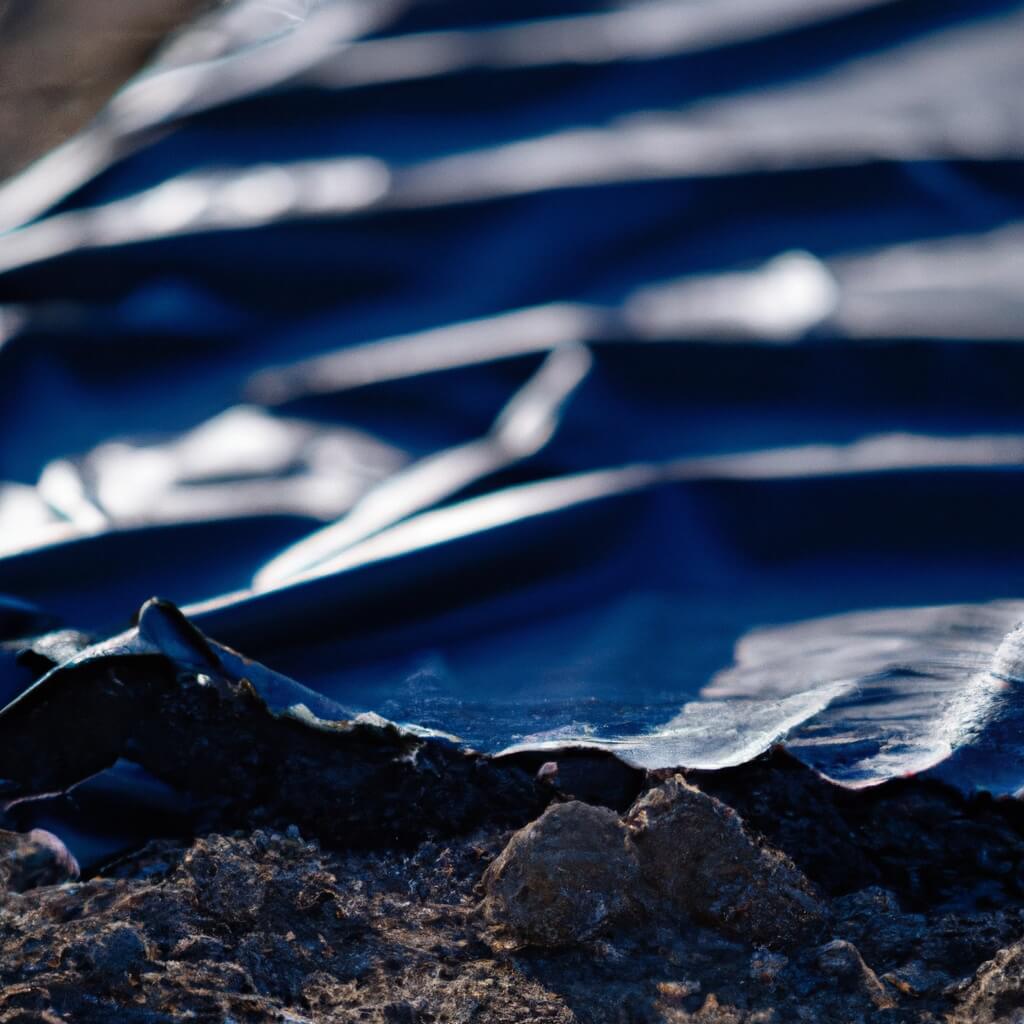When you install artificial grass, you may not think you’ll have to deal with weeds. After all, you are covering up the native soil.
Properly installed new or used artificial grass will indeed prevent weeds from growing through the turf’s backing.
However, weeds can still push against the bottom of the artificial turf and disfigure it.
Weeds are uncommonly good at finding ways to grow in unlikely places. Thankfully, there is a solution: use weed barrier fabric to prevent unsightly lumps and bumps in artificial turf projects.
Although we recommend weed barrier in most cases, there are some situations where you should avoid installing it under synthetic turf.
What is Weed Barrier?
Weed barrier for artificial grass is a geo-textile fabric that is installed as a synthetic turf underlayment. It is also known as weed barrier cloth, weed block fabric, and landscaping fabric. Weed barrier is typically made from polyester or polypropylene. It comes in woven or non-woven styles.

5 Reasons to Get Weed Barrier for Artificial Turf
Wondering why you should invest in a weed barrier? A weed barrier:
1. Blocks Weed Growth
The fabric blocks sunlight from reaching the soil. Weeds need sunlight to grow. Even if a stubborn weed pops its head out of the ground beneath your artificial grass, the weed barrier cloth physically stops the weed from reaching the artificial turf. As its name suggests, it acts as a barrier between the weed and the synthetic turf.
2. Prevents Soil Aeration
When soil is aerated, more oxygen gets into the soil, promoting weed growth. One of the most significant natural sources of soil aeration is the earthworm, eating its way through the soil, loosening it up, and leaving tunnels for water, nutrients, and air to reach weed seeds buried in the dirt.
The more earthworms in your soil, the more likely it is that weeds will be able to grow and thrive. Landscape cloth for synthetic turf is a barrier that will keep the earthworms at bay. They won’t want to live where they can’t reach the surface. With fewer earthworms, weeds will have a more challenging time reaching your turf.
3. Provides Ground Stabilization
You want a solid base for your artificial turf. If there is loose or rocky soil beneath your artificial turf, you could end up with bumps and dips that make it less comfortable to walk on. Weed barrier fabric adds stability, especially if it is a woven weed barrier. It provides an extra layer of firmness and helps prevent soil erosion, so you don’t have to worry about the elements destroying the base of your artificial turf.
4. Protects Synthetic Grass
Besides stabilizing the ground beneath the artificial grass, the weed barrier cloth cushions the artificial turf from whatever is in the soil beneath it. Sharp debris, such as pebbles and rocks, can puncture your artificial grass (if there is no base layer). A layer of weed barrier cloth under your turf adds protection. You want to avoid punctures in your synthetic grass because they can weaken the turf and make it susceptible to more damage.
5. Prevents Base Contamination
Weed barrier can separate the native soil from the base layer (also known as the sub-base layer). If contaminants are in your native soil, you could also get impurities in the base layer unless weed barrier fabric is in place. A weed barrier helps keep the base layer clean.
When Should You Avoid Weed Barrier Fabric?
Now that we have shared a few reasons for installing landscape fabric for synthetic turf, it’s time to explain why weed barrier is not right for some artificial grass projects.
1. When You Have Pets Who Go to the Bathroom Outdoors
If you have pets that will use artificial turf as a bathroom, you should be aware that weed barrier fabric will soak up liquid waste and create lasting odors. This is the main reason why some people with artificial turf choose not to install weed barrier.
However, if you have pets and still want to benefit from the protection and stability of weed barrier fabric, you can use a turf deodorizer like ZeoFill infill. ZeoFill infill is made of 100% natural materials and prevents the ammonium in pet urine from turning into a bad-smelling gas.
ZeoFill infill is just one of several pet-friendly options when choosing infill for your artificial turf.
2. If You Want to Remove Your Artificial Grass in the Future
Weed barrier fabric is excellent at preventing soil aeration and stopping weed growth, but this also leads to less healthy soil. This could be a problem if you decide to remove the artificial grass at some point and choose to grow a garden. The ground covered by the weed barrier cloth will not be conducive to thriving plant life, and you will have difficulty growing a garden there.

Should You Put Weed Barrier Down Before or After Installing a Base Layer?
First, let’s go over why you need a base layer. The base layer creates a level platform and provides drainage for artificial turf. When installing a synthetic grass base layer, excavate 3 to 4 inches of topsoil. The best materials for the base layer are 3 inches of class II road base followed by an inch of decomposed granite (also known as granite dust).
You can lay weed barrier fabric under the base layer, over the base layer, or both.
Lay the landscaping fabric under the base layer to prevent contamination and provide a ground stabilization membrane.
If the native soil is hard (as opposed to clay-like), there is no need to install weed barrier fabric under the base material. Simply lay the weed suppressant membrane over the base.
Weed Barrier Fabric and Used Artificial Grass
Used artificial grass costs 50% to 75% less than new artificial grass, which is great on your budget!
However, used artificial grass may come with punctures from the forklifts that moved them. Proper installation of the used artificial grass will hide these punctures, but they could possibly allow a sliver of sunlight to reach the soil beneath it. Where sunlight can reach the earth, weeds will grow. This means that a weed suppressant membrane is even more critical when you install used artificial grass.
If you are interested in used artificial grass but have pets, regular maintenance and pet-friendly infill can mask any odors trapped by weed barrier.
Weed barrier fabric can mean the difference between a lush, realistic layer of artificial turf and lumps that weeds have pushed up. As long as you don’t have plans for the ground under your artificial turf, weed barrier can add years to the lifespan of your artificial grass with no downsides.
FAQs About Weed Barriers for Artificial Grass
How do you install weed barrier fabric?
First, lay out the fabric so it covers the area. Then, use a utility knife to cut it to fit. Overlap each layer edge by about 6 inches. Secure the fabric with nails every 2 to 3 feet. Secure the perimeter with nails or U-staples every 2 to 3 feet.
What should you look for in weed barrier?
The most important things to look for in landscaping fabric are high puncture strength, tensile strength, and water flow rate. Ideal puncture strength is at least 35 pounds. A good tensile strength is around 135 pounds. Water flow rate should be at least 70 gal/ft/min.
Should you get woven or non-woven weed barrier?
That depends on your native soil and climate. Woven geo-textiles are great for stabilization, so you may choose woven if you are installing over a loose soil type with a higher chance of erosion. Non-woven geo-textiles are ideal for filtration and drainage. You may want to choose non-woven if you get a lot of rain.
May 4, 2023 11:04:00 AM



